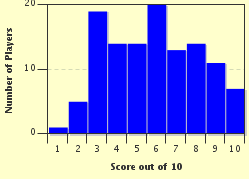Quiz Answer Key and Fun Facts
1. Which is the smallest marsupial in the world?
2. The Australian possum and American opossum have identical physical characteristics, belong in the same animal group, and both have the scientific name Coraciiformes.
3. Which of these is a marsupial which does NOT have an enclosed pouch to rear its young?
4. What type of diet does the Tasmanian devil have?
5. These marsupials appear to smile and have even been labelled the "happiest animal in the world". What type of creature is it?
6. Three false names and one true. Which of the following is the name of an endangered marsupial that lives in Australia?
7. Which of the following "B" words is a type of marsupial which resembles a rat, but with small eyes, pointed nose and ears, and short tail?
8. What is a common name for the brush-tailed bettong?
9. With their distinctive sharp facial features and pointed ears, which marsupial has started to replace the traditional Easter bunny in Australia?
10. Which is the largest type of quoll with its many distinctive white spots on body and tail?
Source: Author
Plodd
This quiz was reviewed by FunTrivia editor
guitargoddess before going online.
Any errors found in FunTrivia content are routinely corrected through our feedback system.


